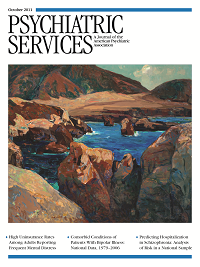Psychosis and Homicide: Reply
Dr. Vinkers and Dr. Liem make an important point about the difference between the number of patients with psychotic illness found NGMI and the total number of people with psychotic illness who commit serious violent offenses. In New South Wales the proportion of homicide offenders with psychosis found NGMI was far higher than the proportion of people with psychosis charged with severe nonlethal violent offenses (1), a situation that seems to be similar to that in the Netherlands, where more than 90% of homicide offenders with psychosis were found to be “completely unaccountable” or to have “strongly diminished accountability” on the 5-point scale grading criminal responsibility.
Historically, thresholds for legal decisions about the criminal responsibility of people with mental illness have been set after attacks on public figures, such as those committed by Hadfield, McNaughton, and, more recently, John Hinckley. The observation that thresholds for mental illness verdicts vary over time, between places, and according to the severity of the offense suggests that the thresholds are determined by social values rather than by any type of objective test. More than 10% of people with schizophrenia who commit a homicide go on to commit another homicide if left untreated (2). Therefore, an important function of NGMI findings is protection of the public by ensuring that forensic patients receive long-term treatment.
1 : Psychotic illness and serious non-lethal violence. Australian and New Zealand Journal of Psychiatry 45:466–472, 2011 Crossref, Medline, Google Scholar
2 : Characteristics of homicide offenders with schizophrenia from the Russian Federation. Schizophrenia Research, Epub Aug 15, 2011. DOI



